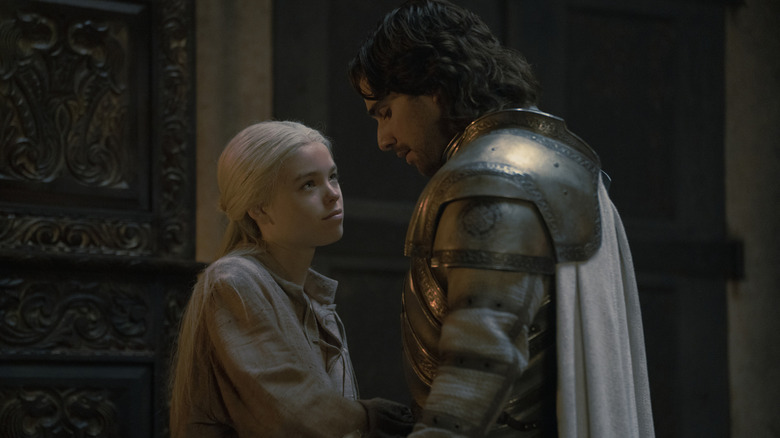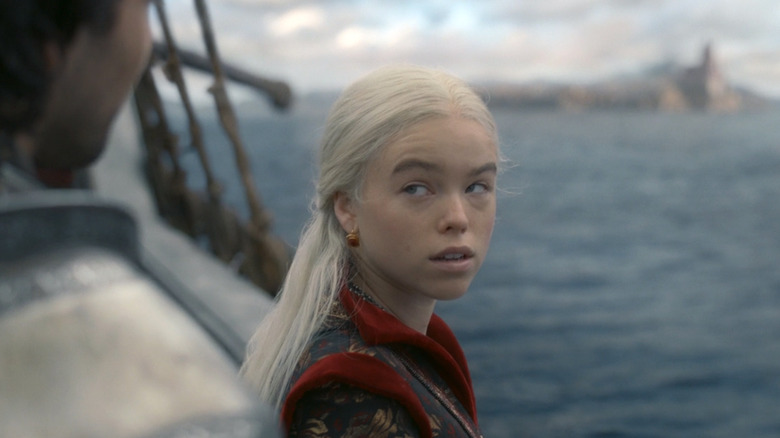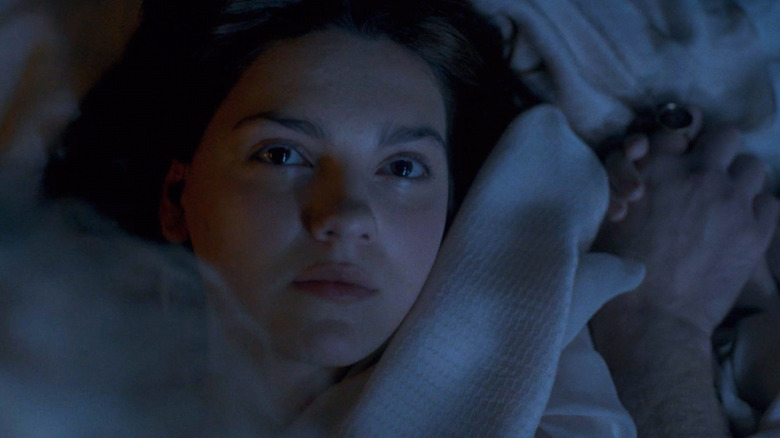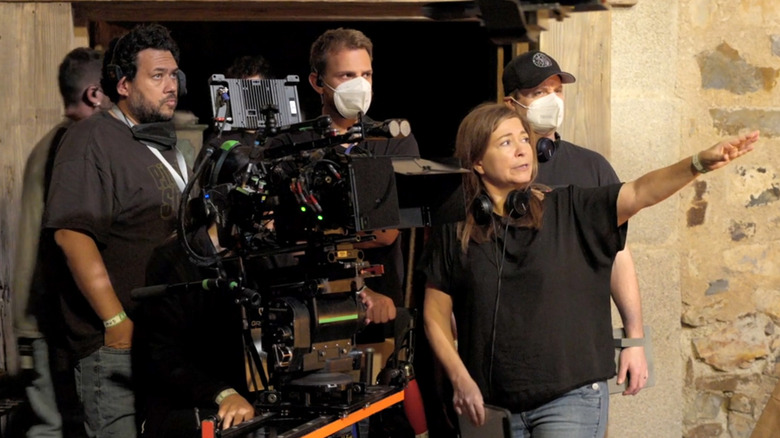How House Of The Dragon Explores The Female Gaze
This article contain's spoilers for "House of the Dragon" episode four.
Author George R. R. Martin writes truly compelling characters regardless of gender, but unfortunately, "Game of Thrones" had a bit of a problem when it came to depicting women. Female suffering was constantly on display without showing much female pleasure or agency. (I still have not forgiven that series' showrunners for Sansa's wedding night.) "House of the Dragon" has come under similar scrutiny, as fans shocked by the premiere's graphic birth scene wondered if the "Game of Thrones" prequel was going to follow in its predecessor's fumbling of female perspectives. Thankfully, the prequel series seems more concerned with telling these stories with authenticity, focusing on the painful struggles of women surviving in a patriarchal world while actually commenting on that suffering.
In the fourth episode of "House of the Dragon," Princess Rhaenyra (Milly Alcock) is coming into her own as an adult, and that includes a sexual awakening. The adolescent dragon-riding princess got sent on a tour by her father to find a suitable husband, but instead ends up back in King's Landing for some much-needed fun. The episode follows Rhaenyra's perspective almost entirely, and helmed by director Clare Kilner, it's a refreshingly authentic view of what it's like to be a teenage girl sneaking out. It's difficult to explain the "female gaze" in concept, but once you see it in action, it's hard to deny.
Objects of female desire
There are several moments throughout the episode where Rhaenyra looks at a man like a tender morsel she wants to feast on instead of another person, and it's honestly a joy to see female desire portrayed so openly. The idea of a "gaze" in storytelling determines who has the power in a given dynamic, so the "female gaze" gives the woman all of the power. The objects of her desire — namely Daemon Targaryen (Matt Smith) and Ser Cole (Fabien Frankel) — are put on display so the audience can see them as Rhaenyra does. They are objectified in the same way that women have been objectified in everything from James Bond movies to hamburger commercials over the years, because this isn't their story; it's Rhaenyra's.
Director Claire Kilner considered Rhaenyra's perspective when setting up every shot. In the "House the Dragons Built" behind-the-scenes featurette for the episode, director Claire Kilner explained that the scenes were carefully blocked out to show Rhaenyra's interests, fears, and desires. In the sequence where Daemon and Rhaenyra have a chat in the godswood and he offers her a glass of wine, seated below her while she perches on the edge of a table, the shots were arranged to give Rhaenyra power and comment on the flirtatious game the two were playing despite their familial relationship. "House of the Dragon" lets Rhaenyra be a horny teenager, and honestly, it's awesome.
The burden of duty
There are three sex scenes within the span of a few minutes, and they're used to show the various power dynamics in (straight, cisgender) relationships. Rhaenyra and Daemon get hot and heavy together in the middle of an orgy, but when Rhaenyra shows she's not an easy conquest and wants control of her own, he flees. Meanwhile, Alicent (Emily Carey) lies on her back and stares at the ceiling while the aging Viserys (Paddy Considine) thrusts atop her. It's her duty to produce children, or as Rhaenyra says, "squeeze out heirs." Sex is something she must endure, not enjoy, and it's a brutal juxtaposition compared to even Rhaenyra's short dalliance with her uncle. Then Rhaenyra sneaks back into her room and seduces Ser Cole, and the two have what looks like really great sex. Mutual satisfaction is basically guaranteed, and there seems to be mutual respect.
All three sex scenes are shot with the focus on the woman's experience, and while there are hints of nudity, it never feels exploitative. Each scene serves a purpose in the character's narrative, as Rhaenyra claims her adulthood and Alicent submits to her own. Alicent's dead stare tells the story of her suffering far better than any of the horrific, graphic scenes of sexual violence in "Game of Thrones," proving that sometimes less is more, especially when it comes to uncomfortable content.
Women telling a woman's story
It's important to have a diverse crew in order to bring everyone's unique experiences to the table when telling a story this big and multifaceted, and "House of the Dragon" has learned from the mistakes of "Game of Thrones" by hiring more women to tackle some of the episodes that need a truly feminine perspective. Kilner and her team manage to make episode four of "House of the Dragon" feel like a much more personal story than anything on "Game of Thrones," and a great deal of that is simply because of attention to the character's faces and performances instead of spectacle. While "Game of Thrones" had dozens of perspective characters, "House of the Dragon" wisely settled on only Rhaenyra and Alicent, the two coming matriarchs. Daemon is shown, but we rarely really see things from his perspective, instead only viewing him through Rhaenyra's gaze or the gaze of the people who look upon him in awe and fear. He's a mythic brat prince, the potentially problematic object of Rhaenyra's desire, but it's still her story, and Alicent's.
We're only four episodes into "House of the Dragon," but it already feels like it's doing better by its female characters than its predecessor ever did. It's not exactly justice for Sansa or Ros or Daenerys, but it's at least a bit of hope that the creators behind this series have learned from the franchise's past mistakes. It's a step in the right direction that not only makes for better diversity and authenticity, but also for better storytelling.
New episodes of "House of the Dragon" debut Sundays on HBO and HBO Max.



